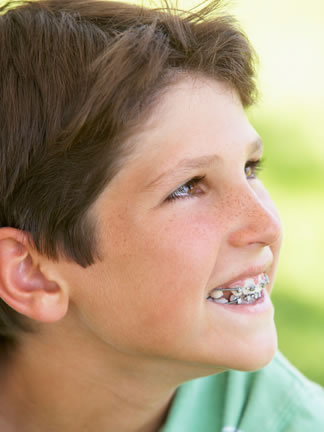
Temporary Anchorage Device (TAD)
Temporary anchorage devices, or TADs, are small titanium anchors used in certain orthodontic cases to help achieve tooth movement with more efficiency and comfort. TADs may be used in addition to braces or as an alternative to headgear. They allow movements not previously possible.
Why is my doctor recommending TADs?
TADs are a game changer in orthodontic treatment. It was not possible prior to their use to move teeth in one direction without moving other teeth in the opposite direction. The only way around that was to pull from outside the mouth, usually with the dreaded headgear. With TADs, your orthodontist can anchor traction to the TADs and make movements in a single direction without the unwanted movements in the opposite direction. It's a whole new ballgame!
How are TADs placed?
A strong anesthetic is used to numb the gum tissue and the jaw surrounding the area where the TAD will be placed. Once the area is numb, your doctor will place the TAD through the gum tissue and firmly into the jawbone. The placing of a TAD is quick, and may be over before you know it. Dr. Bruno may place TADs in certain instances while in others an oral surgeon will perform the procedure. While your doctor is placing the TAD, you may feel slight pressure, but within a day, you will no longer be able to feel the TAD. Your TAD is removed once your treatment is complete, or when it is no longer needed to help straighten your teeth. Removal of a TAD is a comfortable procedure that takes just a few minutes.
What can I do to relieve discomfort caused by my TAD?
Pain medication is seldom required but if you do feel any discomfort from having your TADs placed, Tylenol® is recommended for relief. If you continue to experience discomfort days after your treatment, please contact your dentist as soon as possible.
How can I keep my TAD clean?
A TAD can be cleaned the same way you clean your braces.
If you have questions about TADs, please contact our practice. We will be able to answer any of your questions and provide you with detailed information about your orthodontic treatment.



 Website Powered by Sesame 24-7™
Website Powered by Sesame 24-7™



